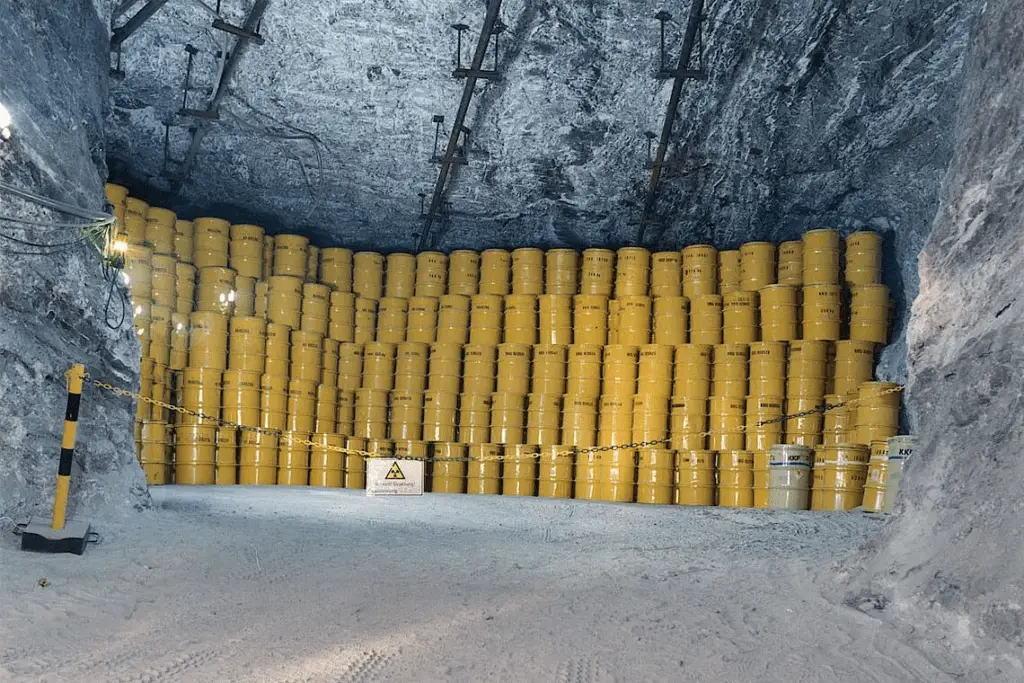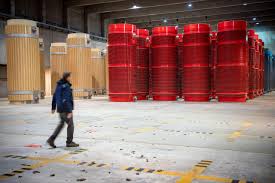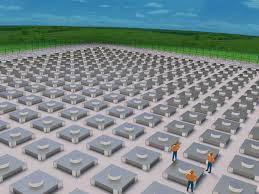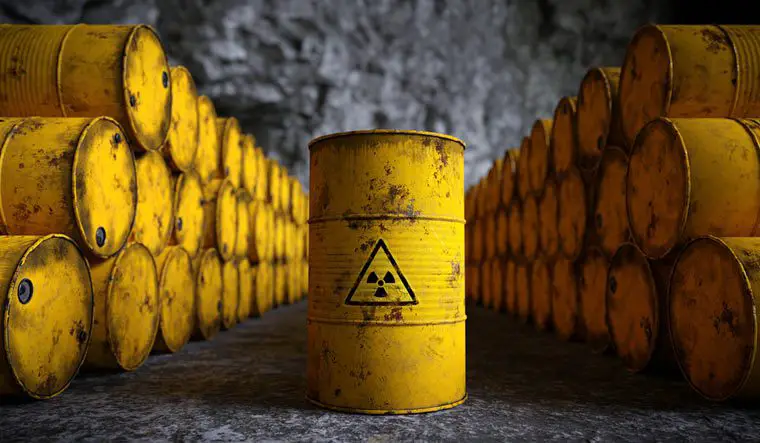Best locations for storing radioactive waste are places where the waste can be kept safe and isolated from people and the environment. Radioactive waste is waste that contains radioactive materials, which can be harmful to living things if they are exposed to it. Storing radioactive waste in the right place is very important to protect public health and the environment.
One of the best locations for storing radioactive waste is deep underground. This is because the Earth’s crust can provide a natural barrier to prevent the radioactive materials from reaching the surface. Deep underground repositories are often built in stable geological formations, such as deep rock layers or salt deposits. These formations can help to contain the radioactive waste and prevent it from leaking out into the environment.
Another option for storing radioactive waste is in specially designed facilities called nuclear waste repositories. These facilities are built to safely store radioactive waste for long periods of time. They have multiple layers of protection, including thick concrete walls and barriers to prevent radiation from escaping. Nuclear waste repositories are carefully monitored and managed to ensure that the waste remains safe and secure.
Some countries also use deep ocean trenches as storage locations for radioactive waste. These trenches are very deep parts of the ocean where the waste can be safely deposited without harming marine life or the environment. However, this option is controversial because it raises concerns about the potential impact on ocean ecosystems and the risk of leakage.
In addition to geological and man-made storage options, some countries also use temporary storage facilities for radioactive waste. These facilities are usually located near nuclear power plants or other facilities that produce radioactive waste. They are designed to store the waste safely until a permanent disposal solution can be found.
Overall, the best locations for storing radioactive waste are those that provide long-term safety and security. Deep underground repositories, nuclear waste repositories, and carefully managed temporary storage facilities are all options for safely storing radioactive waste. By choosing the right storage locations and implementing strict safety measures, we can ensure that radioactive waste is managed responsibly and does not pose a threat to public health or the environment.
Finding the best location for storing radioactive wastes is a multifaceted challenge that involves considerations of safety, environmental impact, and long-term security.
In this article, we will delve into the best locations for radioactive wastes and explore what factors determine the best location for this vital task.
Read Also: Waste to Energy Business: What You Need to Know
Radioactive Wastes and Their Storage

Radioactive wastes encompass a range of materials that have been contaminated with radioactive substances. These substances emit ionizing radiation, which can be harmful to human health and the environment. The three main categories of radioactive waste include:
1. Low-Level Radioactive Waste (LLRW): This category includes materials that have a relatively low level of radioactivity and can be managed using various disposal methods.
2. Intermediate-Level Radioactive Waste (ILRW): Materials in this category have higher radioactivity levels than LLRW and typically require more specialized disposal techniques.
3. High-Level Radioactive Waste (HLRW): HLRW is the most dangerous type of radioactive waste, primarily arising from nuclear reactor operations and reprocessing. Its long-term storage demands the highest level of security.
Storing radioactive waste safely is paramount to avoid contamination, harm to the environment, and risks to human health. When determining the best location for storing radioactive waste, several primary factors come into play, and these factors encompass everything from the geology of the region to the potential impact on local communities.
Geological Stability Of Radioactive Wastes

One of the most important considerations when choosing a location for storing radioactive waste is geological stability. The chosen site must be located in an area with stable geological conditions to minimize the risk of leaks or breaches in the containment systems.
A solid bedrock formation often provides the best option for geological stability. Such rock formations can act as natural barriers, preventing the movement of radioactive materials. Locations with low seismic activity are also preferred to minimize the risk of ground movement.
Read Also: The Impact of Waste to Compost Business
Proximity to Human Populations
Radioactive waste storage facilities should be located as far as possible from densely populated areas. Proximity to urban centers and residential neighborhoods increases the risk associated with the transportation of radioactive waste materials and, in the event of an accident, could lead to severe consequences. As a result, the best locations are typically remote and far from major population centers.
Food, Water, and Wastes Storage

In addition to the primary considerations mentioned above, there are secondary factors that play a role in choosing the ideal location for storing radioactive wastes.
These factors revolve around the storage of food, water, and other materials required for the operation and maintenance of the facility.
1. Food Storage: Proximity to a source of fresh and non-contaminated food is crucial for the safety and well-being of the personnel working at the storage facility.
In the event of an emergency or disruption, easy access to food supplies becomes essential. Thus, a location that is not too remote from a reliable source of food is preferred.
2. Water Supply: An ample supply of clean and uncontaminated water is vital for cooling and decontamination processes at radioactive waste storage facilities.
The selected location should have access to a consistent and uncontaminated water source. The ability to secure this resource is essential for ensuring the safe and efficient operation of the facility.
3. Waste Storage: The radioactive waste storage facility itself needs to have adequate space for waste storage, both interim and long-term.
This includes infrastructure for temporary storage containers, as well as the long-term repository. Proximity to the point of waste generation, such as nuclear power plants, is advantageous to minimize transportation risks.
Environmental Impact Of Radioactive Wastes

The environmental impact of a radioactive waste storage site is a major concern. It is essential to select a location that minimizes the potential harm to ecosystems, water bodies, and natural resources.
Environmental assessments are typically conducted to evaluate the impact on local flora and fauna, as well as the potential for groundwater contamination.
Generally, The selection of an ideal location for storing radioactive wastes is a complex process that takes into account various factors, both primary and secondary.
Geological stability, proximity to human populations, and compliance with regulatory standards are of utmost importance. Secondary factors such as access to food, water, and waste storage also play a vital role in ensuring the facility’s functionality and the well-being of the personnel involved.
In a world where the safe management of radioactive waste is a growing concern, finding the perfect storage location is an essential step towards mitigating risks and protecting the environment and public health.
It is a task that demands careful consideration and meticulous planning to ensure that the chosen site can effectively contain and isolate these hazardous materials for generations to come.
Read Also: Bean Common Mosaic Virus: Description, Damages Caused, Control and Preventive Measures

